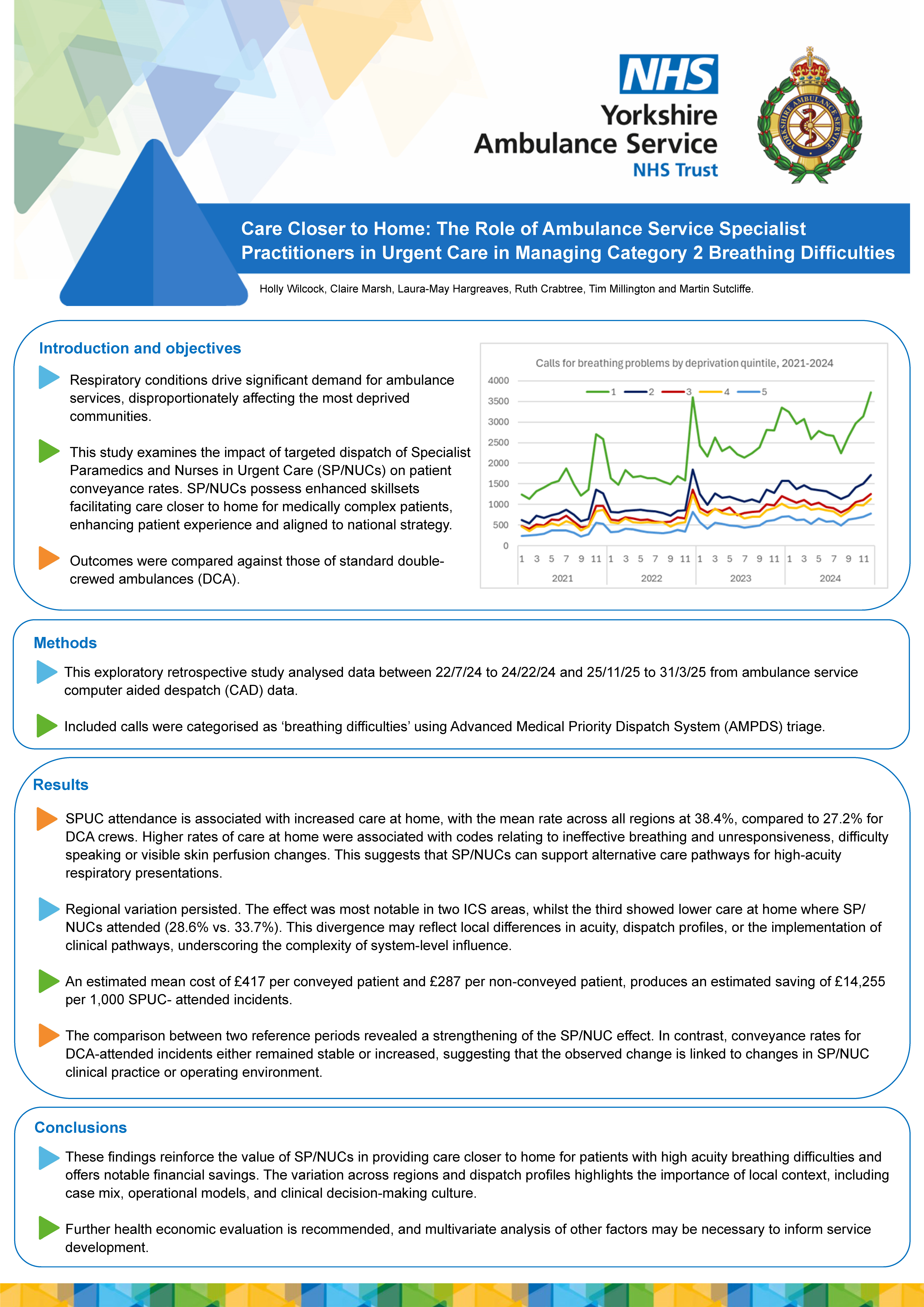Care Closer to Home: The Role of Ambulance Service Specialist Practitioners in Urgent Care in Managing Category 2 Breathing Difficulties (ID 627)
Yorkshire Ambulance Service NHS Trust
Abstract
Background and Aim
Respiratory conditions drive significant demand for ambulance services, disproportionately affecting the most deprived communities. This study examines the impact of targeted dispatch of Specialist Paramedics and Nurses in Urgent Care (SP/NUCs) on patient conveyance rates. SP/NUCs possess enhanced skillsets facilitating care closer to home for medically complex patients, enhancing patient experience and aligned to national strategy. Outcomes were compared against those of standard double-crewed ambulances (DCA)
Methods
This exploratory retrospective study analysed data between 22/7/24 to 24/22/24 and 25/11/25 to 31/3/25 from ambulance service computer aided despatch (CAD) data. Included calls were categorised as ‘breathing difficulties’ using Advanced Medical Priority Dispatch System (AMPDS) triage.
Results
SPUC attendance is associated with increased care at home, with the mean rate across all regions at 38.4%, compared to 27.2% for DCA crews. Higher rates of care at home were associated with codes relating to ineffective breathing and unresponsiveness, difficulty speaking or visible skin perfusion changes. This suggests that SP/NUCs can support alternative care pathways, for high-acuity respiratory presentations.
Regional variation persisted. The effect was most notable in two ICS areas, whilst the third showed lower care at home where SP/NUCs attended (28.6% vs. 33.7%). This divergence may reflect local differences in acuity, dispatch profiles, or the implementation of clinical pathways, underscoring the complexity of system-level influence.
An estimated mean cost of £417 per conveyed patient and £287 per non-conveyed patient, produces an estimated saving of £14,255 per 1,000 SPUC- attended incidents.
The comparison between two reference periods revealed a strengthening of the SP/NUC effect. In contrast, conveyance rates for DCA-attended incidents either remained stable or increased, suggesting that the observed change is linked to changes in SP/NUC clinical practice or operating environment.
Conclusions
These findings reinforce the value of SP/NUCs in providing care closer to home for patients with high acuity breathing difficulties and offers notable financial savings. The variation across regions and dispatch profiles highlights the importance of local context, including case mix, operational models, and clinical decision-making culture. Further health economic evaluation is recommended, and multivariate analysis of other factors may be necessary to inform service development.
Funding: None
Conflicts of interest: None
